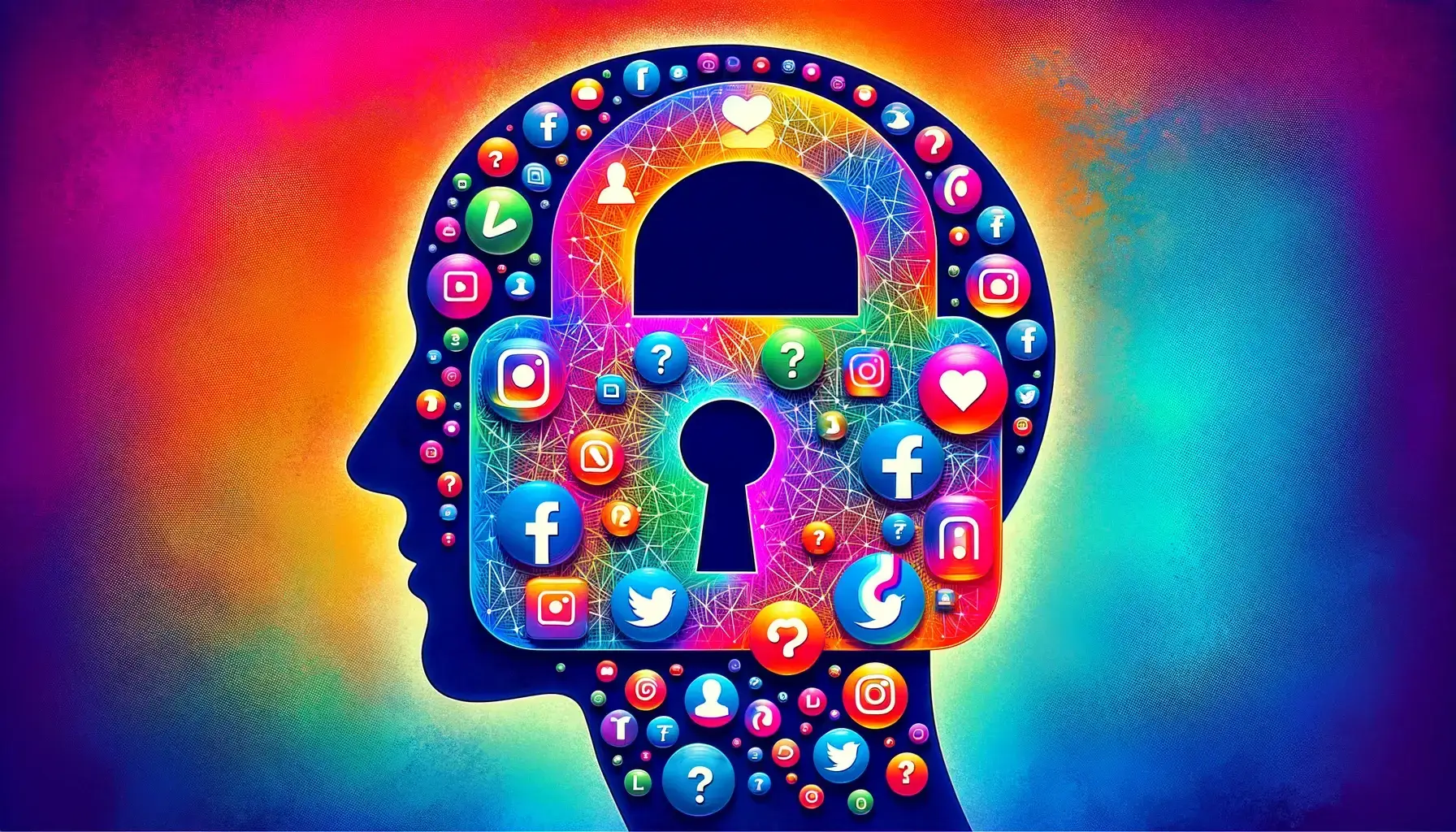Since the Cambridge Analytica scandal of 2010, where the company used Facebook data to micro-target political messages, users have grown more aware that their data can be used against them.
According to the latest figures, over 4.8 billion people worldwide use social media, with the average person utilizing around six social media platforms monthly.
Over the last decade, however, a heavy spotlight has been placed on platforms like Facebook and Instagram.
A growing body of opt-out guides has put the power back in internet users’ hands, empowering them to regather their data and stop inadvertently growing data brokers’ bottom lines.
Skip to: 10 Ways to Protect Your Social Media Privacy

All images in this article were created using OpenAI DALL-E 3
For many people, being active on social media is equivalent to giving up your internet privacy, but this shouldn’t be the case.
Everyone should have the right to privacy, and social media should be a tool to stay in contact with those you know, not passively offer data to those you do not.
In 2024, however, it is up to each of us to ensure our privacy. While Facebook shut down access to the API in 2014, this platform and others still collect data.
There are countless nefarious individuals and entities who will use your personal information on social media for monetary gain. Let's look at 10 ways to protect against that for both your business and personal social profiles.
10 Ways to Protect Your Social Media Privacy
If you’re using social media, you must know how to navigate social media privacy, ensuring that you guard your digital presence and keep your personal information personal.
Scroll through all ten, or click below to skip ahead:
- Opt-out of data brokers
- Use a security-oriented browser
- Work through social media privacy settings
- Turn off geolocation
- Ensure a private connection
- Choose strong, different passwords
- Use 2FA (Two-Factor Authentication)
- Stay up-to-date with phishing scams
- Force logouts from unrecognized devices
- Regularly update your software
![]()
1. Opt out of data brokers
As mentioned, many people now opt out of guides to delete their digital footprint. It stops data brokers from harnessing personal information.
They can obtain it from search histories, purchasing histories, and social media profiles – and sell it to the highest bidder. Protecting your info on social media and the internet is the best way to stop data brokers at the source.
2. Use a security-oriented browser
Another thing you can do outside of social media is change your internet browser. If you’re using Google Chrome, for instance, then your activity is still being tracked and harvested.
But other more secure internet browsers like Brave and Epic block tracking, fingerprinting, ads, and ad trackers by default – meaning you don’t have to fiddle through privacy settings to protect yourself.
3. Work through social media privacy settings
Speaking of fiddling through settings, let’s focus solely on social media. For platforms like Facebook and Instagram, click the ‘Settings & Privacy’ tab to toggle your privacy settings.
The ‘Off-Platform Activity' setting is one of the most important to switch off.
It will stop the social media platform from tracking you even when you’re outside of the platform itself.
![]()
4. Turn off geolocation
On most social media platforms, you will be asked for access to your location. In most cases, this isn’t necessary, and you can still have an outstanding social media experience without sharing where you are.
Even if you refuse, you should still double-check your location settings.
Many apps like Facebook and Snapchat will automatically geotag certain information you make public. Meaning your exact location may be shared with untrustworthy users. Look at your location settings and update them if this is the case.
5. Ensure a private connection
Using a secure, private internet connection is vital when you're on social media.
While you might be tempted to look at Facebook in a cafe or the airport briefly, you should always avoid accessing a website that asks for a password when there’s a chance nefarious third parties can hack into your connection.

Outside of this, if you have to use a public network, ensure you do so under the protection of a VPN – a virtual private network that can encrypt your access and hide it from hackers.
6. Choose strong, different passwords
Speaking of passwords, you should know how to make your password strong.
As mentioned before, the average social media user will use around six platforms every month, but many still need to change their passwords.
It makes it far easier for hackers to attain a password and use it across multiple platforms to achieve the most damage.
7. Use 2FA (Two-Factor Authentication)
One of the best ways to protect personal data in 2024 is through 2FA, or two-factor authentication. You may have encountered it when logging into Gmail or Amazon.
You should also be using two-factor authentication for all social media platforms.
There are many guides on the web for setting up two-factor authentication for platforms like Facebook, LinkedIn, X, Instagram, and more.
8. Stay up-to-date with phishing scams
According to a report undertaken in early 2023, over 62% of Facebook users encounter phishing scams every week. It is a real problem for many social media users every year.

Hackers use new techniques to obtain sensitive information or even install ransomware on your device.
9. Force logouts from unrecognized devices
When using social media, sometimes you will be told that there was an attempted login from an unrecognized device.
If this happens, you must quickly force logouts from those devices and change your password.
You will also need to review your security features – including those we discussed in this article – to understand how someone gained access.
10. Regularly update your software
For many social media platforms, new software updates that have upgraded security solutions are often released, and you will need to make sure you download them to stay in the loop.
Hackers always have new ways to gain access to your data, which means your software needs to be regularly updated to prevent them.
Conclusion
Navigating the complex landscape of social media privacy is essential for maintaining a safe digital presence. The rise of data brokers and the persistent threat of phishing scams underscore the importance of proactive measures.
Utilizing security-oriented browsers, regularly updating privacy settings on social media platforms, and employing strong, unique passwords combined with Two-Factor Authentication are key steps in safeguarding personal information.
By adhering to these guidelines and staying informed about the latest security threats, users can enjoy the benefits of social media while minimizing the risks to their digital privacy.


